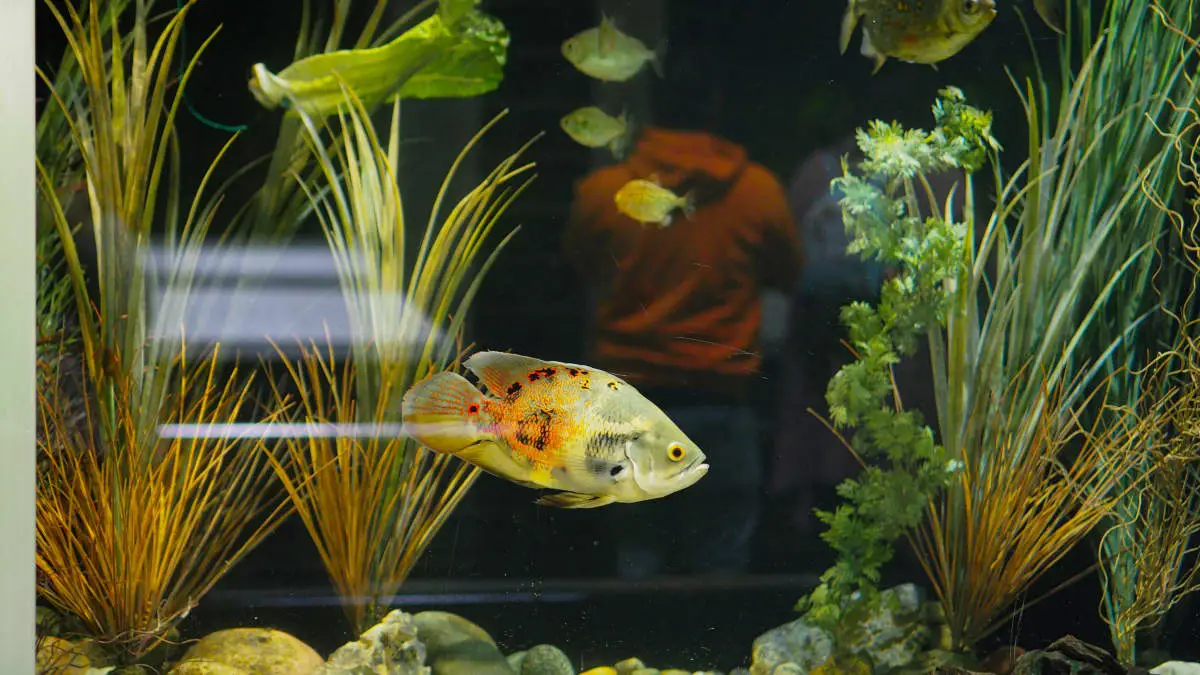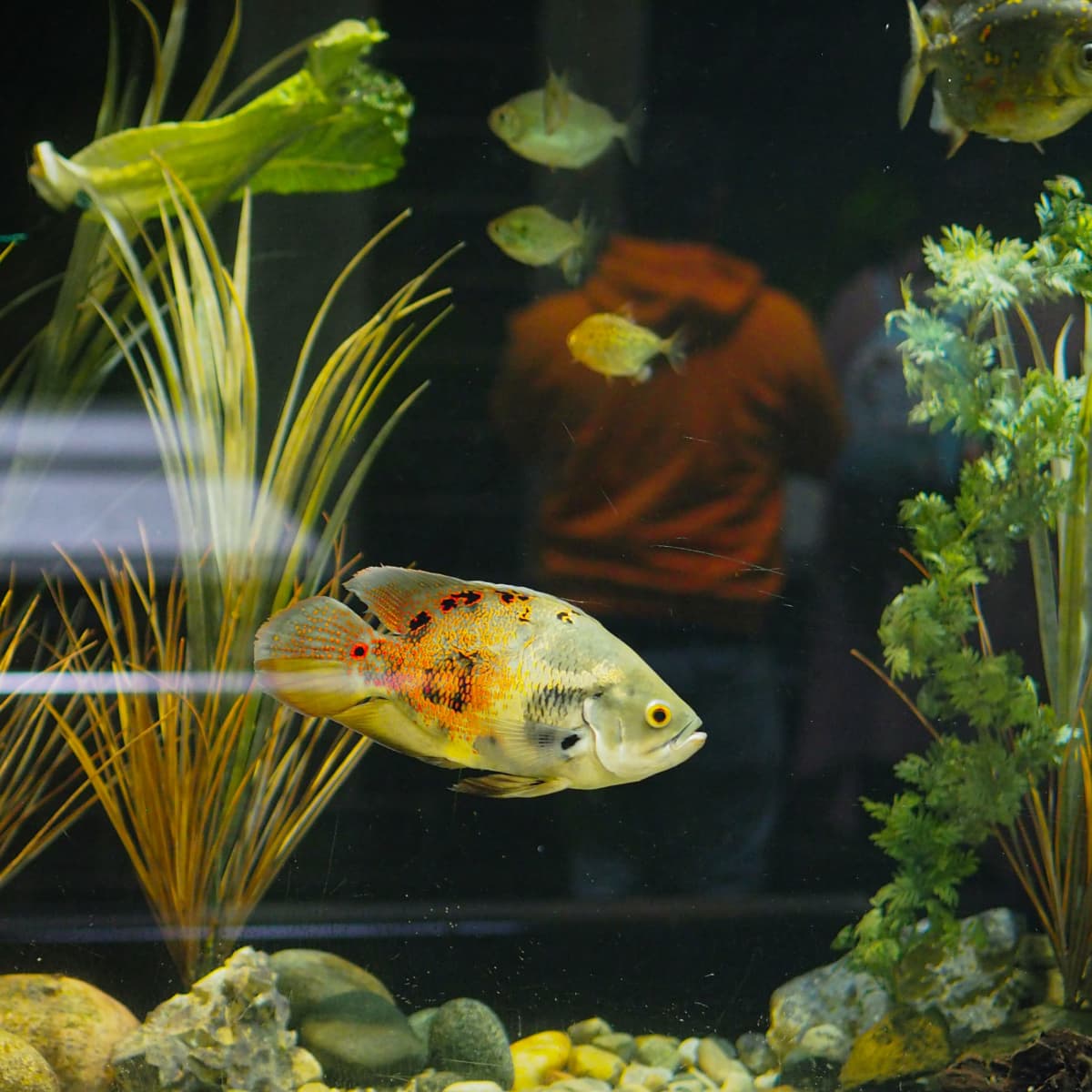Aquariums are a fantastic way to bring a piece of nature into your home, and live plants can add a whole new dimension to your underwater world. While there are many benefits to using live plants in your aquarium, there are also some drawbacks to consider. In this article, we will explore the pros and cons of using live plants in your aquarium, so you can make an informed decision about how to create the perfect aquatic environment for your fish.
Live plants can create a natural and vibrant ecosystem in your aquarium, providing essential oxygen and filtration, as well as a source of food and shelter for your fish. However, they also require more maintenance and can be more difficult to care for than artificial plants. Let’s dive in and explore the pros and cons of using live plants in your aquarium, so you can decide if they are the right choice for you.
Pros and Cons of Using Live Plants in Your Aquarium: Live plants can enhance the beauty of your aquarium while providing several benefits such as oxygenation, filtration, and natural hiding places for fish. However, they require proper lighting, fertilization, and CO2 injection, which can be challenging for beginners. Additionally, live plants can carry pests and diseases, and they may require trimming and maintenance regularly. Overall, using live plants in your aquarium can be rewarding but requires dedication and knowledge.

Pros and Cons of Using Live Plants in Your Aquarium
Live plants have become a popular addition to aquariums, providing natural beauty and a range of benefits. However, along with the benefits come a few downsides. In this article, we’ll explore the pros and cons of using live plants in your aquarium.
Pros
1. Natural Beauty: Live plants add a natural aesthetic to aquariums, making them more attractive and visually appealing. They provide a more realistic habitat for your fish, making them feel more at home and reducing stress.
2. Oxygen Production: Live plants produce oxygen through photosynthesis, which helps to maintain the balance of oxygen and carbon dioxide in your aquarium. This keeps your fish healthy and helps to prevent algae blooms.
- One of the benefits of live plants is that they consume the carbon dioxide that fish produce and produce oxygen in return, which helps keep the water quality high and the fish healthy.
- Additionally, they can help to reduce the amount of algae that grows in your aquarium by competing with algae for nutrients. This can be particularly helpful if you have a problem with excessive algae growth.
3. Natural Filtration: Live plants help to filter the water in your aquarium by absorbing harmful chemicals and toxins. This means that you can reduce the frequency of water changes and spend less money on chemical filtration products.
4. Habitat for Fish: Live plants provide a natural habitat for fish, offering hiding places, breeding sites, and a source of food. This can help to reduce stress and increase the overall health of your fish.
Cons
1. Maintenance: Live plants require maintenance, including regular pruning, fertilizing, and cleaning. This can be time-consuming and may require specialized equipment.
2. Compatibility: Not all fish species are compatible with live plants. Some may eat or uproot the plants, while others may require a specific type of plant for their habitat.
- Another disadvantage of live plants is that they can be difficult to maintain if you have fish that like to uproot or eat them. Some fish, such as cichlids, are notorious for destroying plants, so you may need to choose your plants carefully or avoid using them altogether if you have these types of fish.
- Additionally, some fish require a specific type of plant for their habitat, so it can be challenging to create the perfect environment for all of your fish if you have a diverse collection.
3. Cost: Live plants can be expensive, and the cost can add up quickly if you have a large aquarium or multiple aquariums.
4. Disease: Live plants can introduce disease into your aquarium if they are not properly quarantined or if they are purchased from an unreliable source.
- One of the downsides of using live plants is that they can introduce diseases into your aquarium if they are not properly quarantined or if they are purchased from an unreliable source. This can be particularly problematic if you have a large collection of fish, as diseases can spread quickly and be difficult to control.
- It’s important to thoroughly research any plants you plan to use in your aquarium and to purchase them from a reputable source to reduce the risk of introducing disease.
Conclusion
Live plants can be a beautiful and beneficial addition to your aquarium, but they do come with a few downsides. Before deciding to use live plants in your aquarium, it’s essential to consider the pros and cons carefully and to research the specific needs of your fish species.
| Pros | Cons |
|---|---|
| Natural Beauty | Maintenance |
| Oxygen Production | Compatibility |
| Natural Filtration | Cost |
| Habitat for Fish | Disease |
In conclusion, live plants can be a great addition to any aquarium, but they do require some upkeep and may not be suitable for all fish species. If you decide to use live plants, be sure to research the specific needs of your fish and choose plants that are compatible with your aquarium’s environment. With proper care and maintenance, live plants can provide a natural and healthy environment for your fish to thrive in.
Frequently Asked Questions
Live plants can be a beautiful addition to any aquarium, but they also require care and maintenance. Here are some common questions about the pros and cons of using live plants in your aquarium.
What are the benefits of using live plants in your aquarium?
Live plants provide many benefits to your aquarium. They help to oxygenate the water and remove harmful chemicals such as nitrates and phosphates. They also provide a natural food source for herbivorous fish and provide hiding places for shy or small fish. Live plants can also help to reduce algae growth and create a more natural and aesthetically pleasing environment for your fish.
However, it’s important to note that live plants require proper lighting, nutrients, and CO2 levels to thrive. They also require regular pruning and maintenance to prevent overgrowth and decay.
What are the drawbacks of using live plants in your aquarium?
While live plants can be beneficial, there are also some drawbacks to consider. One of the main concerns is the potential for plant decay, which can lead to increased ammonia levels and harm your fish. Live plants also require specific water parameters, which can be challenging to maintain for some aquarium owners. Additionally, some fish species may not be compatible with live plants and may damage or eat them.
Another consideration is the cost of setting up and maintaining a planted aquarium. Live plants require proper lighting, CO2 injection, and nutrient supplementation, which can be expensive. You may also need to invest in specialized equipment, such as a CO2 regulator or planted tank substrate.
How do you care for live plants in your aquarium?
Proper care and maintenance are essential for the health of your live plants. This includes providing adequate lighting, CO2 injection, and nutrient supplementation. You should also regularly prune your plants to prevent overgrowth and decay. It’s important to monitor your water parameters, such as pH and hardness, and make adjustments as necessary. You may also need to supplement with additional fertilizers or supplements, depending on the needs of your plants.
When selecting plants for your aquarium, be sure to choose species that are compatible with your water parameters and fish species. Some plants may require specific lighting or CO2 levels to thrive. You should also be sure to quarantine new plants before adding them to your aquarium to prevent the introduction of pests or diseases.
What are some good beginner plants for a planted aquarium?
If you’re new to planted aquariums, it’s important to choose species that are easy to care for and compatible with your water parameters. Some good beginner plants include Java fern, Anubias, and Amazon sword. These species are hardy and can tolerate a range of water conditions. They also do not require high levels of lighting or CO2 injection.
Another good option is moss, which can be attached to rocks or driftwood and provides a natural and attractive look to your aquarium. Other easy-to-care-for species include java moss, wisteria, and cryptocoryne.
Can you use fake plants in your aquarium instead of live plants?
While fake plants may be a more convenient option, they do not provide the same benefits as live plants. Fake plants do not help to oxygenate the water or remove harmful chemicals, and they do not provide a natural food source for your fish. Additionally, fake plants can be harder to clean and may accumulate algae or debris over time.
If you’re unable to maintain live plants in your aquarium, there are other options to consider, such as using natural rocks, driftwood, or other decor. These items can provide hiding places for your fish and create a natural environment without the added maintenance of live plants.

Pros and Cons of Live Aquarium Plants
In conclusion, live plants can bring many benefits to your aquarium, but they also present some challenges. Firstly, they create a natural and beautiful environment for your fish to live in. They provide oxygen, reduce nitrates and ammonia levels, and offer hiding places for your fish to feel safe. Secondly, they require some maintenance, such as trimming and fertilizing, but this can also be a fun and rewarding part of owning an aquarium. Lastly, they can be more expensive than artificial plants, but the benefits they bring to your aquarium make them a worthwhile investment.
However, live plants may not be the best choice for everyone. If you are a beginner aquarist, or you do not have the time or resources to properly care for live plants, artificial plants may be a better option. They require less maintenance and can still add beauty and interest to your aquarium. Additionally, some fish species may prefer a more barren environment without live plants.
Ultimately, the decision to use live plants in your aquarium should be based on your personal preferences and needs. If you are willing to put in the effort to care for them, live plants can enhance the health and beauty of your aquarium. If not, artificial plants can still provide a visually appealing environment for your fish to thrive in.
